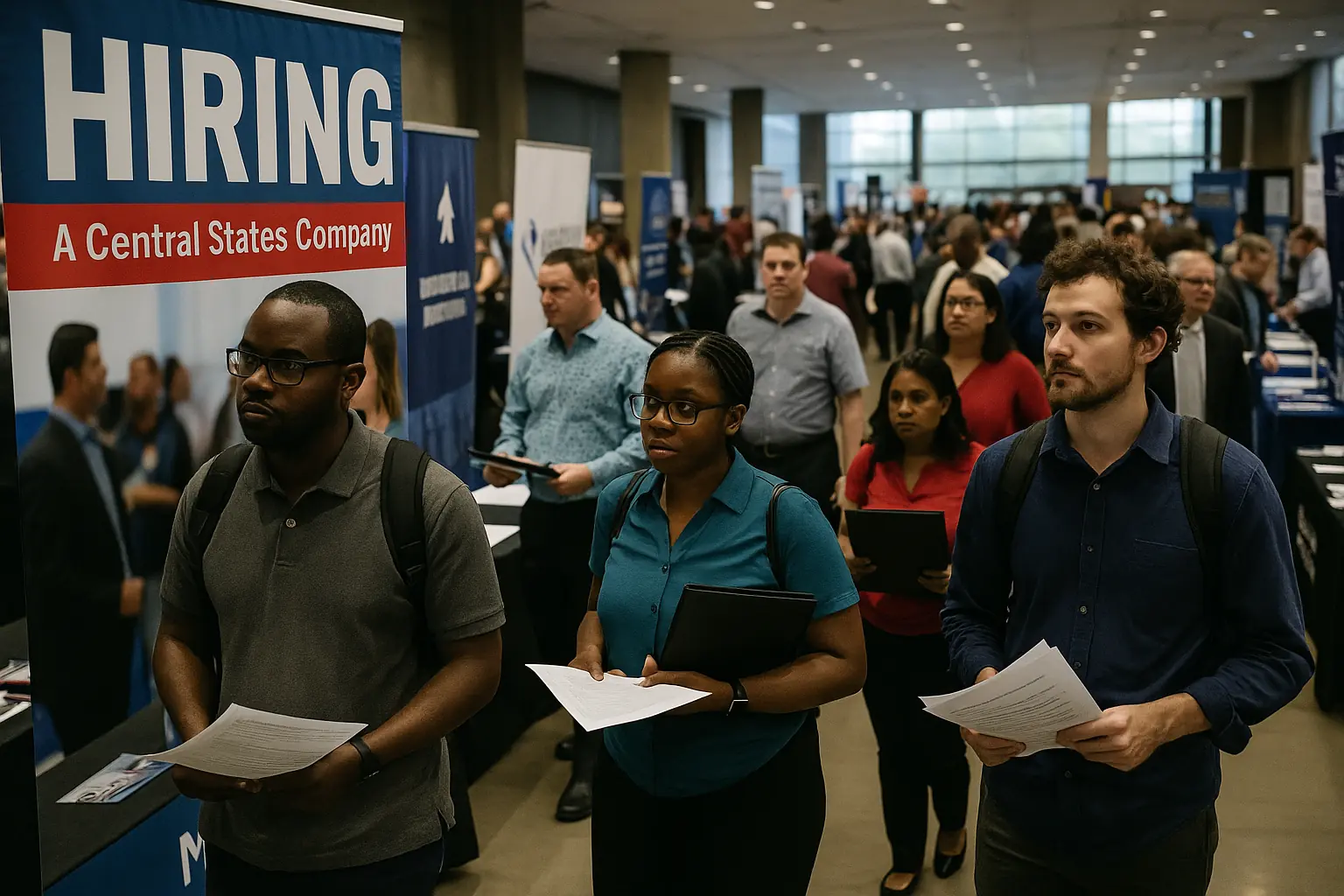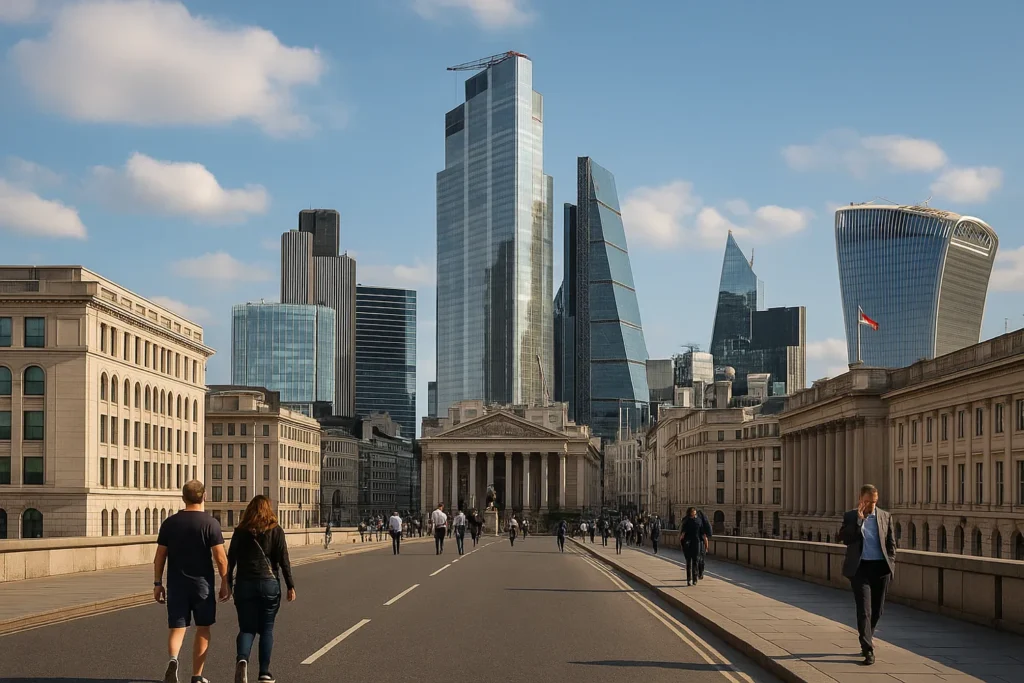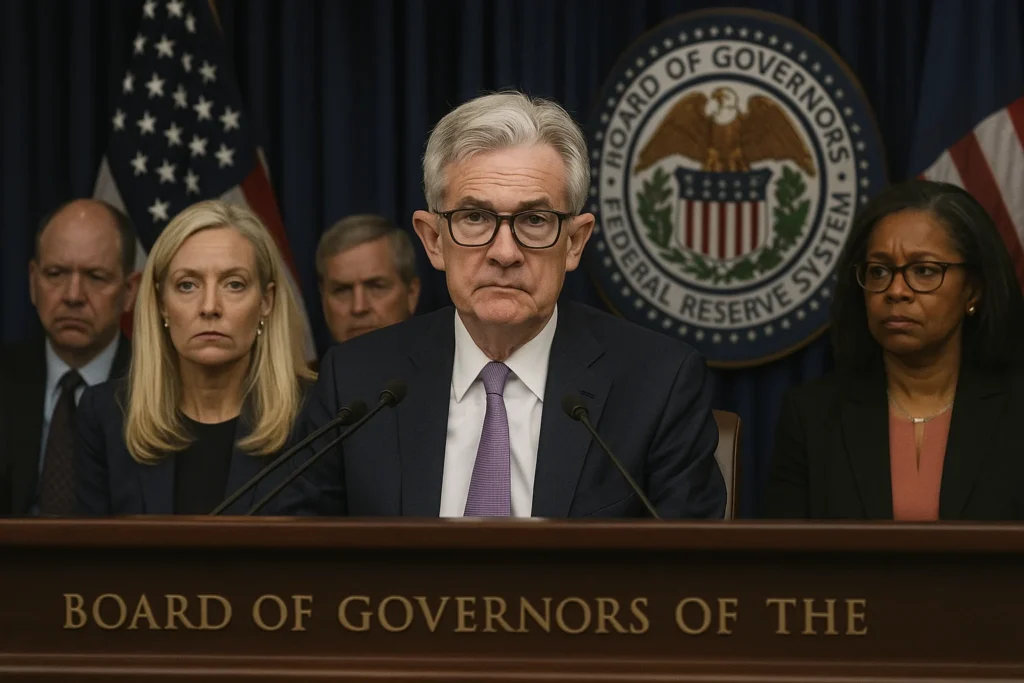The US job market slowdown has turned from a warning sign into a flashing red light. Only 22,000 jobs were added in August — the weakest performance since 2021 — while unemployment climbed to 4.3%. What was once hailed as a “soft landing” now looks dangerously close to a stall. For the Federal Reserve, this new data could rewrite the script for the rest of the year.
Context: a cooling economy masked by old optimism
For months, officials in Washington painted a picture of resilience. The White House boasted about “historic job creation,” while the Fed maintained that inflation could cool without hurting employment. But the latest figures — just 22,000 new jobs, far below the 150,000 forecast — expose a stark reversal.
The manufacturing and construction sectors lost momentum, retail hiring froze, and temporary help — often the canary in the labor coal mine — declined again. The unemployment rate’s jump to 4.3% may look modest, but it represents hundreds of thousands of people falling out of work in a single month.
Wall Street reacted swiftly. Bond yields dropped, futures on the S&P 500 fell, and traders priced in a 50% chance of a half-point rate cut in September. The once-optimistic “soft landing” narrative is losing altitude.
Oppositional Argument: why the “healthy slowdown” myth is collapsing
Mainstream economists keep repeating the same comforting refrain: “The job market is cooling, not collapsing.” But that’s not what the data says. Beneath the headline numbers lies a widening divide — between the corporate profits of big firms and the shrinking paychecks of American workers.
The labor participation rate among prime-age workers slipped again. Average weekly hours declined. Wage growth slowed to 3.7%, lagging behind inflation in essentials like housing and healthcare. This is not a balanced correction; it’s a pressure cooker.
What’s worse, policymakers seem more worried about appeasing markets than protecting workers. The Fed’s fixation on inflation has overshadowed a growing employment crisis that’s now spreading from factories to offices.
Analytical Breakdown: the Fed dilemma and the coming policy shift
The Federal Reserve now faces a cruel paradox: act too late, and risk a recession; act too soon, and risk inflation’s return. But after this jobs report, the balance of risk has clearly shifted.
Historically, an unemployment rate rising by more than 0.5 points in a year — the so-called “Sahm Rule” — has always preceded a recession. The US is approaching that threshold fast. If the Fed ignores it, the cost could be a contraction worse than the one policymakers are trying to avoid.
Investors are already anticipating cuts. Futures markets now price in a 75% probability of at least one rate reduction before November. Meanwhile, small businesses — the backbone of job creation — are choking under higher credit costs. For them, the difference between a quarter-point and a half-point cut could mean survival or collapse.
Even insiders at the central bank are reportedly divided. Leaked notes from recent Fed staff meetings suggest deep unease over deteriorating “labor dynamics” and rising “structural unemployment risk.” These aren’t academic terms — they’re early warnings.
Human Perspective: the quiet collapse behind the numbers
Beyond the data, the slowdown is deeply human. A 42-year-old warehouse supervisor in Ohio described being laid off “after 17 years of stable work” as orders dried up. “They told us demand would rebound by summer. It didn’t,” he said. Similar stories are surfacing across the country — from Atlanta to Detroit.
Gig workers who once relied on flexible hours now face shrinking pay. College graduates entering the workforce are finding fewer entry-level openings. The American job market, once defined by mobility and opportunity, is starting to feel static — even brittle.
Counterarguments
Some analysts argue that 22,000 new jobs still show growth, not contraction. But that’s a dangerously narrow view. Employment growth this weak, paired with rising unemployment and softening wages, is a sign of structural weakness, not resilience.
Others claim automation or AI disruptions are to blame. Yet these are long-term shifts. The immediate problem is monetary overkill: the Fed’s prolonged rate hikes have drained liquidity from sectors that actually hire people. The “data-driven” policy has become data-destructive.
Conclusion: a turning point for the American economy
The US job market slowdown isn’t just a data point — it’s a turning point. The economy is losing its last buffer against a downturn, and the policy response will define the next decade. The Fed must pivot fast, or risk triggering the very recession it swore to prevent.
If there’s one lesson from 2021’s recovery, it’s this: you can’t sustain growth by squeezing workers. The American economy’s strength has always come from the bottom up, not the boardroom down. And right now, that foundation is cracking.
External Links
30 views






